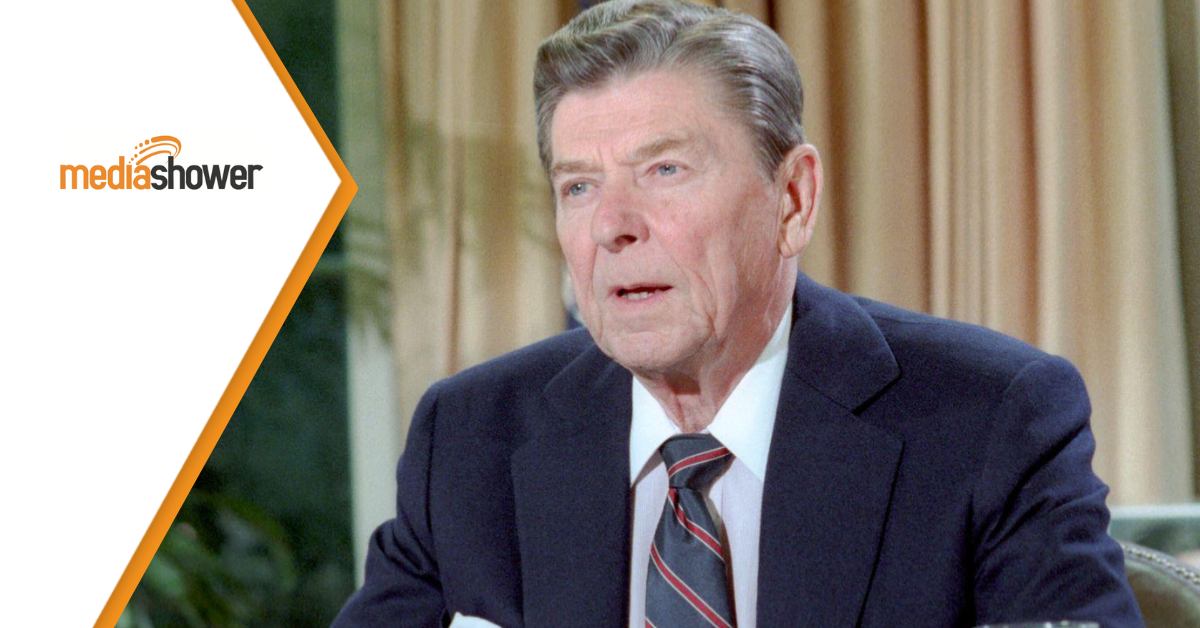
- TLDR: In a brief but powerful speech, Ronald Reagan acknowledged the tragedy of the Challenger Space Shuttle explosion, while giving his audience hope.
- So What? By acknowledging different audience members’ emotions and hopes, Reagan helped unite the nation after an enormous tragedy.
On January 28th, 1986, the Space Shuttle Challenger broke apart less than two minutes into its flight, killing the entire crew of seven and throwing the nation into mourning. Furthermore, this tragedy was televised live, where it was watched by children and adults alike.
Then-President Ronald Reagan had been scheduled to deliver a State of the Union address. Instead, he chose to memorialize the Challenger crew.
Reagan’s speech, less than five minutes long, is a powerful example of how communicators respect the emotions that tragedy can bring up, while laying a path to move forward.
Acknowledging Emotions with Empathy
Most likely, Reagan understands there is no way to enter this speech gracefully. Accordingly, he frankly acknowledges that because of this tragedy, plans have changed. While mentioning the sadness he and First Lady Nancy Reagan feel, he also emphatically states that this is “truly a national loss.”
The address speaks to each group with sensitivity. Reagan discusses a previous NASA disaster, the Apollo 1 fire, and the courage it took to move forward from that event.
“Nineteen years ago, almost to the day, we lost three astronauts in a terrible accident on the ground. But we’ve never lost an astronaut in flight; we’ve never had a tragedy like this. Perhaps we’ve forgotten the courage it took for the shuttle crew. They, the Challenger Seven, were aware of the dangers but overcame them and did their jobs brilliantly. We mourn seven heroes: Michael Smith, Dick Scobee, Judith Resnik, Ronald McNair, Ellison Onizuka, Gregory Jarvis, and Christa McAuliffe. We mourn their loss as a nation together.”
He then acknowledges the feelings of the crewmembers’ families, saying:
“We cannot bear, as you do, the full impact of this tragedy. But we feel the loss, and we’re thinking about you so very much.”
This continues throughout the speech. Reagan directly addresses NASA’s team at one point to say:
“…I wish I could talk to every man and woman who works for NASA or who worked on this mission and tell them: ‘Your dedication and professionalism have moved and impressed us for decades. And we know of your anguish. We share it.’”
He even speaks to the schoolchildren of America, many of whom saw the disaster unfold live on TV, shifting his language to suit younger listeners:
“I know it is hard to understand, but sometimes painful things like this happen. It’s all part of the process of exploration and discovery. It’s all part of taking a chance and expanding man’s horizons. The future doesn’t belong to the fainthearted; it belongs to the brave. The Challenger crew was pulling us into the future, and we’ll continue to follow them.”
Reagan uses careful words to bring the audience together: he notes that while we may not all feel sadness in the same way, this is a day of mourning for those close to the astronauts, those invested in the mission of the project, and the nation as a whole.
Furthermore, he’s able to recognize that the tragedy impacts many different people in different ways, including those at NASA (who were so close to the astronauts) and even schoolchildren who might be confused and traumatized by seeing it end in tragedy.
Giving a Sense of Hope
The speech also serves as a masterclass on how language can guide the way forward in both concrete and emotional terms.
Some of this is in the imagery used in the speech. Reagan continually refers to the Challenger crew as “pioneers” and “explorers,” at one point comparing them to the noted sailor Sir Francis Drake. Throughout the speech, he praises their courage and commitment to their work, noting that space flight was an act of public service.
He also notes that the way forward will not be easy and that there may be other losses, but it will be rewarding. The speech strikes a hopeful note about the future by highlighting that sacrifice and tragedy are part of any exploration, and we should value the work explorers do.

Painting a Future Vision
At the same time, though, Reagan explicitly lays out the future of NASA and the next steps.
He states there will be an investigation, which there indeed was, conducted by a Congressional committee. But these lines served a dual purpose for communicating the future of the space program.
He even subtly digs at the Soviet Union by stating, “We don’t keep secrets and cover things up. We do it all upfront and in public. That’s how freedom is, and we wouldn’t change it for a minute.”
This is quite a rhetorical balancing act, where the leader of the United States, in a tense political climate, facing a massive loss in a highly competitive pursuit (the space race), shot through with politics and national identity, manages to bring hope and national identity into the conversation.
This is a challenging path. The skill, however, is undeniable, and Reagan manages to thread the needle to combine hope, national identity, and patriotism to the forefront of his speech.
In doing so, he uses language to avoid a blow-up of the space program itself. He firmly states that this will not be the end of the space race:
“We’ll continue our quest in space. There will be more shuttle flights and more shuttle crews and, yes, more volunteers, more civilians, and more teachers in space. Nothing ends here; our hopes and our journeys continue.”
Reagan was correct that the way forward wouldn’t be easy. An extensive investigation led to substantial changes in how and why NASA sends people to space, and forced extensive soul-searching about its culture of safety and its approach to extreme situations. There wasn’t a shuttle launch for nearly three years, until Discovery was launched in September 1989.
Communicating Optimism in Tragedy
Sometimes, as marketers, we are called upon to communicate sad, challenging, or political news in our messaging, typically in the service of a larger call to action. The war in Ukraine. The conflict in the Middle East. Black Lives Matter.
A large part of effective communication involves empathy, understanding where your audience is, and acknowledging the wide array of emotions while still conveying a sense of optimism and hope.
Through Reagan’s address, we see that leadership can form from careful, empathetic communication that understands but still guides, opening a hopeful space for the audience.
What should communicators take away from this speech?
- Take a moment to speak to the varied emotions of your audience, especially on difficult topics, and do so with language tailored to them.
- Acknowledge the feelings of others, offering support and validation for those feelings where you can.
- Choose imagery that reflects your overall tone and goal to build a sense of the way forward.
- Discuss concrete action where it makes sense, infusing your audience with a sense of hope, optimism, and purpose.
Communicate your brand message the right way: our Blog Topic Generator has hope and optimism built in.
